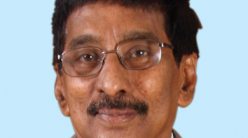Why do some find life as a postdoctoral fellow in India so challenging?

Ask any PhD student about their next endeavour and the most common answer you would receive is a postdoctoral stint, preferably abroad. Postdoctoral positions allow one to pursue independent research in one’s field of interest, paving the way for a future academic career.
Postdocs add value to a research lab. They bring with them expertise in their respective fields, along with the experience and training to comprehend and write scientific papers at a quicker pace and with a deeper understanding than PhD students. Their PhD background gives them the foundation to pursue independent research of their own, while also augmenting the ongoing research in the lab they join. Additionally, postdocs can help guide PhD students with their experiments and academic challenges.
A significant proportion of fresh PhD graduates from India prefer going to universities or institutes in Europe or USA for postdoc opportunities. In comparison, there are fewer graduates who decide to stay in or return to India for their postdoctoral position. IISc, for example, is one of the most sought-after institutes for research in the country. Its legacy of publications and high-impact research attracts many young researchers. Yet the number of postdocs working at the Institute is not very large. IISc currently has more than 400 faculty members and 2,700 PhD students (including integrated PhD) in various departments, but only 174 postdoctoral researchers.
What could be the major issues that might discourage graduate students from joining Indian institutions as postdocs, and what are the challenges they face during their postdoc tenure?
What could be the major issues that might discourage graduate students from joining Indian institutions as postdocs, and what are the challenges they face during their postdoc tenure? I spoke to a few postdocs at IISc to find out.
A couple of postdocs I spoke to mentioned that one of the challenges they face is limited flexibility to pursue independent research, which is contrary to the expectation that postdocs should work on new and interesting projects. Many postdocs are recruited through their Principal Investigator’s (PI) existing projects and they may end up working on that same project throughout their tenure. This may further the PI’s career aspirations rather than giving postdocs more time to build their own skills.
Fortunately, this is not an issue all postdocs face. Some postdocs say that they do have the freedom to pursue independent and exciting research, in line with their expectations. “I always expected to contribute something novel and meaningful to research, which I believe I am doing here,” says a postdoc in engineering. “I am in the right place and have found a good environment for research.”
Independence in pursuing research is critical for postdocs so that they can continue publishing papers. Publishing in a high quality and high impact publication while working in an institution in India can be challenging. This is particularly important for postdocs since they are not yet established in their field of study and need a high impact publication to make their mark.

The fellowship scheme under which one joins as a postdoc can also make a difference. There are multiple fellowships that postdocs in India can apply for, and the opportunities each one offers vary. Sveta Chakrabarti, who joined IISc as a Wellcome Trust/DBT India Alliance postdoctoral fellow in 2016, says that the choice of the postdoctoral scheme has made a significant difference in her career. The India Alliance scheme has allowed her to work both at IISc and a university in the UK simultaneously, and she has received valuable guidance from both of her mentors, in addition to a contingency grant for her work. Although she cannot train and mentor a PhD student under this scheme, she can hire project assistants who have helped her shape her current work, she says.
Sveta asserts that, during her time in the Institute and at the Division of Biological Sciences so far, she has received help from other faculty members and built successful collaborations, which will help her substantially in her career. The India Alliance scheme also allows their fellows to focus more on publications around the middle of their fellowship term, which is usually not seen in other fellowship schemes.
The fellowship amount disbursed also varies significantly across funding agencies. Postdoc salaries range anywhere from Rs 50,000 to Rs 1,00,000 a month. A postdoc who receives the Dr DS Kothari Postdoctoral Fellowship says, “The fellowship amount is the least among other postdoctoral fellowships in India and disbursal of fellowship payment is chaotic, which affects research.”
The fellowship amount disbursed varies significantly across funding agencies
He asserts that he has personally faced a lot of issues with receiving his fellowship and has even had to file an RTI application. “Getting my fellowship regularly is still challenging. Earlier, I used to get my fellowship from the National Board of Higher Mathematics (NBHM), and payment disbursal was equally poor. It took me eight months to get my first scholarship through filing RTI,” he says. “There was never a fruitful response from NBHM. I called them over the phone and wrote emails several times. The same scenario was repeated in the second year of the fellowship.” Sveta, too, says that a couple of her colleagues face problems due to the irregularity in fellowship disbursement, which can be stressful, especially for those who are the sole earning members of their families.
A postdoc in the Division of Biological Sciences who has a SERB fellowship also expressed concern at the difficulty in procuring consumables and equipment, and the fact that she has to seek permission to purchase every item. This can create a demotivating environment, she says. Another postdoc from one of the engineering divisions voiced a similar opinion, highlighting that access to and use of common instruments was poorly managed in her department.
The lack of “postdoc culture” in the Institute is another concern. There are very few seminars or symposia organised specifically for postdocs. Yearly or bi-annual presentations are a part of PhD life anywhere in the world, and students are made to present their work at least once in front of faculty members and other students. Such forums provide opportunities for critical assessment of research work, which is important for any researcher and will aid in improving their science.
One postdoc at IISc had some related suggestions. “I feel that there should be regular workshops for PhD students or postdocs regarding the different fellowships available, intramural or international. It would be good to form a postdoc association to help each other, and a guidance committee to help clarify uncertainties about building their future,” she says. An alumnus of IISc, Lakshmi Nararsimhan T, who is presently a faculty member in IIT Palakkad, suggested that introducing schemes which allow postdoctoral researchers to work in collaboration with universities abroad will also help improve the quality of research.
While there are numerous problems postdocs face, there are also new schemes being introduced to address some of these issues. IISc, for example, has recently started the Raman fellowship scheme for postdocs as part of its Institution of Eminence status. The fellowship comes with a generous salary of Rs 1,00,000 per month and an annual contingency grant of Rs 8,00,000. Around 25 fellows may be recruited per year for a term of one year, with the possibility of extension for another year after review. Vikram Jayaram, Chair, Division of Mechanical Sciences, explains that the scheme has been implemented to provide a comfortable working environment for postdocs, and attract bright young researchers to supplement research in the lab of their choice. The contingency amount, he says, is given with the idea of allowing the postdoc to attend various workshops and conferences. He believes that the programme could significantly help to attract high calibre postdoctoral fellows to the Institute.
These perspectives give a bird’s eye view of the current situation of postdoc life. There is certainly a lot that could be improved for these fellows to have a fruitful research career.
Namrata is a PhD student at IISc.




